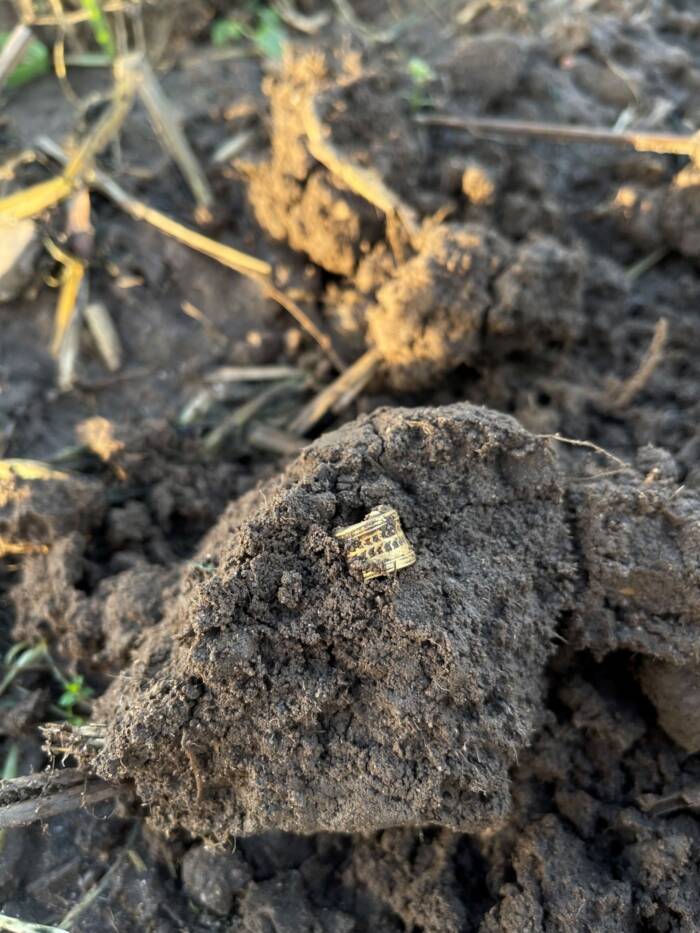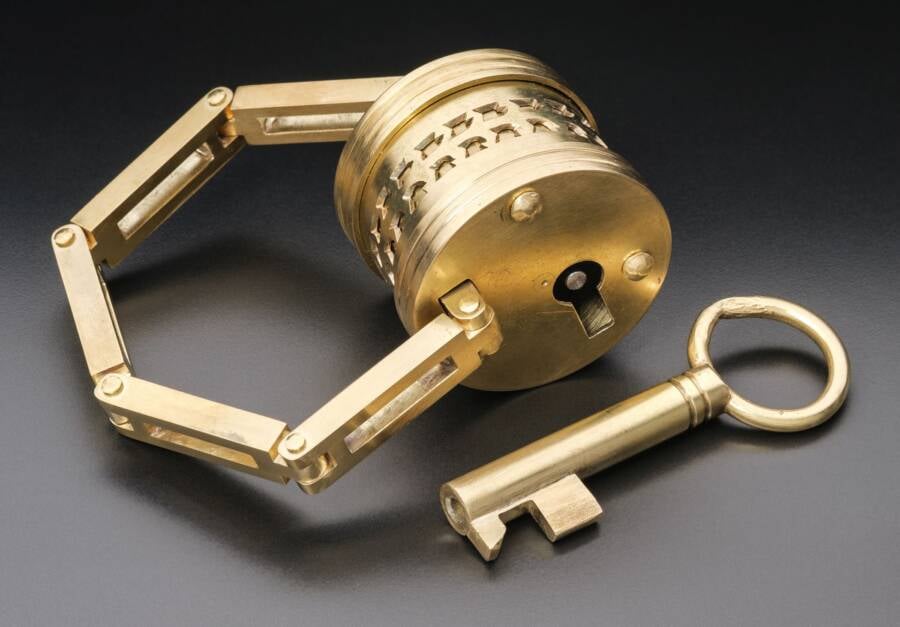Made of lustrous gold and measuring in at just over one centimeter across, this lock was likely made during the third or fourth century C.E.
LWL / S. Brent guideThe miniature Roman curl made of gold line up in Germany measures just 0.47 inch in diam and 0.43 inch in tiptop .
The Westphalia - Lippe Regional Association ( LWL ) recently herald the find of a miniature Roman lock , smaller than a dime , that was unearthed in North Rhine - Westphalia , Germany in 2023 . The lock was discovered during a metallic element detecting resume in a field near Petershagen - Frille and was afterwards account to the LWL , where it was essay by archaeologists .
Researchers see that the box lock date stamp back to the third or fourth one C C.E. and that the uncovering is “ probably unique in Europe according to current research , ” pera translate statementfrom LWL theater director Dr. Georg Lunemann , who added , “ I am thrilled that we can come up with such high - quality finds here in Westphalia . ”

LWL/S. Brent guideThe miniature Roman lock made of gold found in Germany measures just 0.47 inches in diameter and 0.43 inches in height.
The Discovery Of An Ancient Roman Lock In Germany
In 2023 , licensed metal detectorist Constantin Fried was follow a force field in Petershagen - Frille when he came across a surprising find . aright there , just below the dirt in the field , was a little lock chamber made of Au , one that presumably would have been used to batten a box curb valuables . The artefact ’s shape was familiar to him , but the size certainly was not .
“ I could hardly trust it myself when I held the find in my hand , ” Fried said . “ Because such R.C. locks are usually much larger and comprise of iron or bronze parts . ”
Constantin Fried / LWLThe Romanic lock as it was found in Petershagen - Frille , Germany .

Constantin Fried/LWLThe Roman lock as it was found in Petershagen-Frille, Germany.
expert from the LWL confirm this initial assessment , noting similarities between its construction and the industry of larger boxwood locks from the Roman geological era . “ The lock was surely made in the provincial Roman orbit and can be dated to the third or quaternary century advert establish on its shape , technical social organisation and style of decoration , ” said LWL ethnic managing director and archeologist Dr. Barbara Rüschoff - Parzinger .
There are legion ways in which the small lock could have found its manner to Westphalia . LWL Archaeology manager Dr. Michael Rind suggested that a local elite or soldier may have brought back a little dresser affixed with the lock upon give back from military Robert William Service . In any case , Rind note that the uncovering was exceptionally rare .
E. de Bourdeaux / LWLLicensed alloy detectorist Constantin Fried , the man who made the discovery .

E. de Bourdeaux/LWLLicensed metal detectorist Constantin Fried, the man who made the discovery.
“ The gilt miniature tin lock chamber is the only one of its kind in Europe and is the northernmost canister lock found in Germany , ” he said . “ Was it a one - off creation or have interchangeable precious toy simply not been find before ? We will continue to work on these and other interrogation . ”
Researchers Analyze The Miniature Roman Lock And Create A Larger Replica
Once researchers had the curl in hand , they were able-bodied to conduct a more thorough analysis of its construction . While the headstone and chain were missing , they did observe that the lock itself was make up of two cylindrical alloy sheets close with hat on top and at the bottom , secure with three rivet . Restorers also observed a rusty iron core and a broken bit of the ending of a chain link , address into question whether the lock had once had a functioning mechanism .
Paul Scherrer Institute / Villigen [ CH]/ David MannesCT mental imagery of the Roman lock .
To resolve this question , they used a “ 3D neutron computed imaging ” ( CT ) , a technique rarely used in archeological examination . However , in this instance , it was necessary , as according to Rind , “ Even a 3D X - shaft of light computer tomography scan could only show the rivets , which are also made of gold , and the chain end link inside due to the high tightness of the gold lock shell . ” The researchers require to see how the ringlet work on the interior , though .

Paul Scherrer Institute/Villigen [CH]/ David MannesCT imagery of the Roman lock.
Thankfully , the CT examination made this potential . The high - answer image quality allowed the team to ascertain how the lock worked , revealing cross - sections of a build with a leap , maneuver track , bolt , cornerstone photographic plate , and a pin . In other words , it did indeed function .
LWL / Stefan BrentführerThe replica Roman lock , four sentence the sizing of the original .
“ They also showed that the mechanism is largely gross but damaged , because someone had obviously horn in around in the lock at the time , probably to get out it opened or to remove a obstruction , ” said Fried .

LWL/Stefan BrentführerThe replica Roman lock, four times the size of the original.
“ Despite the harm , the occasion of the mechanism and the lost Florida key could be easy reconstruct , because the shape and dimensions of the components allowed conclusions to be drawn . But comparative discovery also helped here , ” Rind added . “ With the chain ending link still in situation , it was also possible to reconstruct a nexus range of mountains for the lock , which must have had at least six element for the whorl to work . ”
LWL / Stefan BrentführerThe scale reconstruction in a closed state , illustrating how the lock function .
Based on this analysis , a renovator from the LWL was able to make a reconstruction of the lock four times gravid than the original . This bigger replica makes it even easy to see how the lock ’s mechanism work . Researchers are also promising that this discovery could shine an even greater light source on the kinship between local elite group in Westphalia and the larger Roman Empire , as well as the potential local significance of the sight .

LWL/Stefan BrentführerThe scale reconstruction in a closed state, illustrating how the lock functioned.
“ The extraordinary uncovering from Petershagen shows the high tier of craft of the provincial Roman blacksmith and metalwork swap , ” Rüschoff - Parzinger conclude .
After reading about the find of this small Roman lock in Germany , memorise all aboutwhy the Roman Empire fell . Then , see our list ofremarkable fact that will transfer your understanding of ancient Rome .